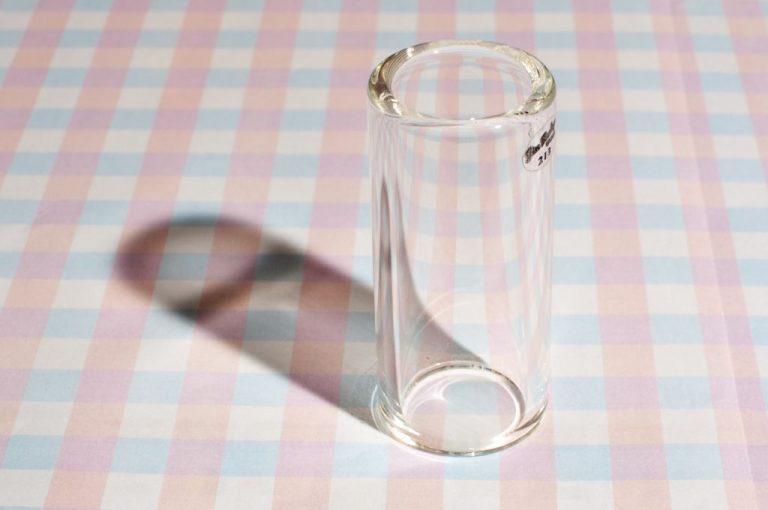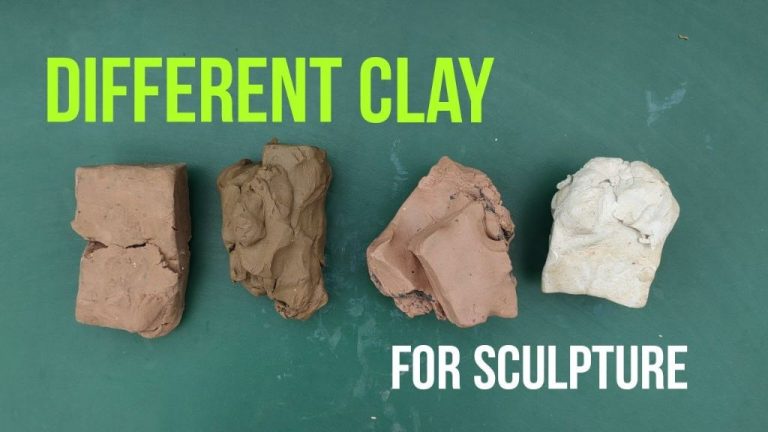What Are The Different Solid Shapes You Find In The Pottery?
Pottery has been an important part of human civilization for thousands of years. Across different cultures and time periods, pottery has been a medium for both utilitarian and artistic expression. The shapes and styles of pottery provide insight into the lifestyles, values, and innovations of past societies. Over the centuries, pottery has evolved from basic vessels for storing food and water into a diverse array of forms including plates, bowls, cups, vases, jars, and figurines. Examining the key solid shapes found in pottery can illuminate how pottery has adapted to suit human needs and aesthetics.
Bowl
The bowl is one of the most basic and ubiquitous pottery shapes found across cultures and time periods.[1] Bowls have been fashioned since the very beginnings of pottery production, with examples found dating back over 20,000 years to the prehistoric Jōmon period in Japan.[2] These early bowls were relatively simple affairs made from coils of clay, though over time potters developed sophisticated techniques for throwing bowls on a potter’s wheel. Bowls can vary greatly in size and design – from tiny condiment dishes to large serving bowls. They may have delicate thin walls or be thick and heavy. Some unique bowl styles include kutani ware with its colorful Japanese designs, the elegant simplicity of Korean moon jars, and Mexican casserole dishes and bean pots.[3]
Bowls are so universal because they serve a simple practical function – to hold food or liquid. Their concave shape makes bowls ideal for holding and serving soups, stews, grains, salads, and more. Bowls come in infinite varieties to suit different cultural food customs. For example, rice bowls evolved to complement Asian cuisine. In Japan, lacquered wooden or porcelain rice bowls called chawan are used in the tea ceremony. Meanwhile, the Vikings drank ale from curved ceramic horns. Traditional West African calabash bowls are carved from dried gourds. And Native American potters perfected unique regional styles of painted, coiled bowls.[4]
Beyond their quotidian uses, bowls have also held ceremonial and symbolic importance in many cultures as funerary offerings, ritual vessels, decorative wares, and art pieces. The simplicity and universality of the bowl shape has captivated artisans and potters for millennia.
[1] https://en.wikipedia.org/wiki/Pottery
[2] https://deneenpottery.com/pottery/
[3] https://en.wikipedia.org/wiki/Pottery
[4] https://deneenpottery.com/pottery/
Vase
Vases have been used since ancient times to hold flower arrangements and display floral bouquets in homes. The ancient Egyptians are thought to be the earliest civilisation to have used vases for decorative purposes. Indeed, it was in ancient Egypt where ornate vases were first produced over 5,000 years ago, as evidenced by vase artifacts found in Egyptian tombs (https://www.mayfairgallery.com/blog/history-antique-vases/).
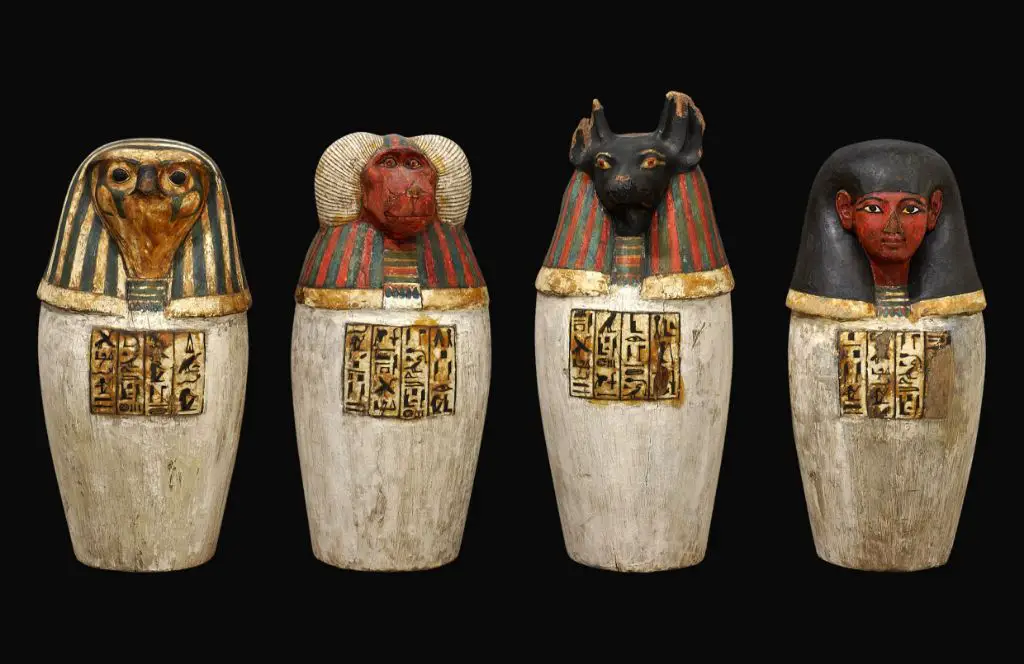
Throughout history, vases have served both practical and artistic functions across many cultures. They provide a means of arranging and displaying flowers and plants. Vases also allow for great artistic expression, with diverse materials, shapes, designs and decorations used in their creation. From ancient Greek amphoras to delicate porcelain vases of the Ming dynasty, vases have long been a canvas for artistry (https://en.wikipedia.org/wiki/Vase).
Today, vases continue to be a popular household item. They add a touch of elegance and style when displaying fresh or dried floral designs. Vases come in a vast array of sizes, materials and styles to match different decors. They are an integral part of flower arranging and interior design.
Jug
Jugs are one of the most common shapes found in pottery. Jugs are containers with a handle and spout used for pouring liquids. They come in many sizes but generally have a round body, narrow neck, flared lip, and strap handle joining the shoulder to the upper neck. Jugs have been made by potters for thousands of years and appear in a wide range of styles.
Some of the earliest known jugs were made in ancient Egypt, China, and the Mediterranean over 5,000 years ago. Egyptian potters produced elegant jars and jugs to hold wine, oils, and cosmetics. Ancient Greek potters made painted jugs and pitchers for pouring and serving wine. In the Middle Ages in Europe, jugs were a common household item used for serving drinks. Medieval jugs came in earthenware, stoneware, and metal. Famous pottery production centers for jugs included Germany and England.
Today, potters around the world make jugs in both traditional and contemporary styles. Modern jugs come in all types of clay bodies and glazes. Some potters focus on the functional pouring ability of the jug, while others aim for decorative styles. Contemporary jugs exhibit great diversity in shape, color, and surface design. Jugs continue to be popular and practical vessels for daily use or display.
Plate
Plates are one of the most common shapes found in pottery. They have been used throughout history for serving food at the table. Early plates were simply flat slabs of bread or leaves used to hold food (The History of Dinner Plates). As pottery techniques developed, plates became popular dishes made from materials like clay, wood, pewter, and porcelain. Ceramic plates first emerged in China during the Song dynasty around 1000 CE and eventually spread to Europe (The Evolution of Dinner Plates).
Plates are designed with a flat base and raised rim to hold food while eating. They enabled people to have individual servings at meals instead of sharing communal dishes. The smooth, steady surface was ideal for cutting, spearing, and scooping food. Plates ranged from simple designs for everyday use to finely painted and glazed wares for special occasions. Over time, plates increased in size and decoration as dining habits changed. Different plate styles also emerged such as appetizer, dessert, bread and butter, and charger plates.
Today, plates come in a vast array of sizes, shapes, materials, and patterns. They are a staple dish for serving meals in homes and restaurants around the world. The functionality and ubiquity of plates throughout history makes them one of the most recognizable and essential vessel shapes in pottery.
Cup
A cup is a smaller version of a bowl, often used for drinking liquids like water, tea, or coffee. Cups have existed for thousands of years, with some of the earliest examples found in ancient Mesopotamia, Egypt, Greece and Rome.
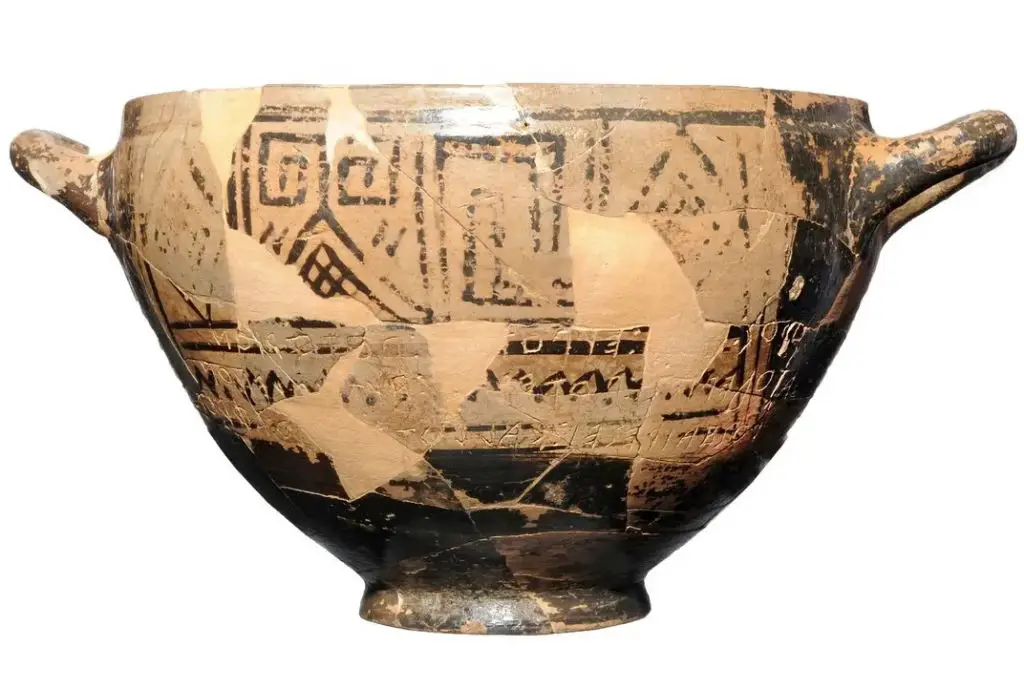
Some of the oldest surviving cups include the Rillaton Gold Cup that dates back to around 1700 BC. This cup was discovered in Cornwall, England and was made of hammered gold 1. Other ancient cup shapes include two-handled cups from ancient Greece and wide shallow cups used in the Roman empire.
Over time, cups evolved into many specialized shapes for drinking different beverages. For example, tea cups often include a handle and saucer, while coffee cups may be taller to retain heat. Cup sizes can range from small espresso cups to large mugs.
Cups are made from various materials including ceramics, glass, metal, wood, and plastic. They may be decorated with engravings, painted designs, or left plain. The shape and style of cups have changed through history according to cultural trends and fashions.
Jar
Jars are one of the most common shapes found in pottery. Jars are containers that have a wide body, narrow neck, and often a lid or cap. They are specifically designed for storage of food, liquids, and other household goods. In ancient times, jars were a critical technology for storing and transporting goods.
One of the most iconic ancient jars is the Canopic jar used in Ancient Egypt during the mummification process. According to the Wikipedia article on Canopic jars, these jars “were used by the ancient Egyptians during the mummification process to store and preserve the viscera of their owner for the afterlife.” Canopic jars came in sets of four, each jar holding different organs removed from the deceased. The jars were topped with lids shaped as the heads of the four sons of Horus.
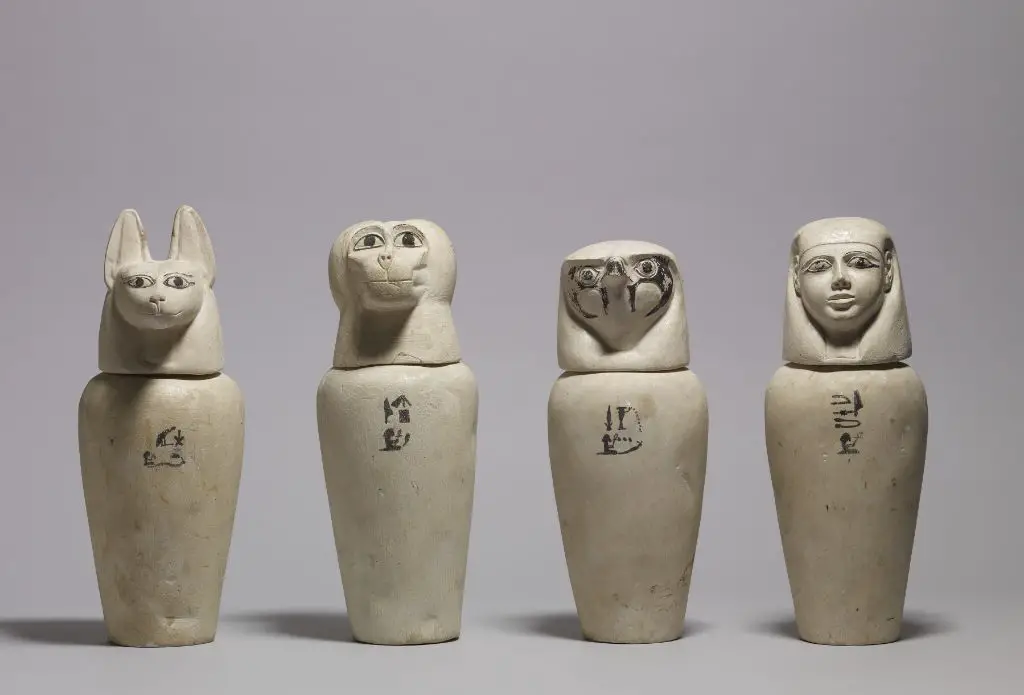
Besides Canopic jars, ancient Greek pottery also featured many standard jars and jugs for holding water, wine, oil, and food. The hydria was one common type of Greek water jar, often decorated with intricate artwork and designs. Hydriai had three handles and a narrow neck for easy pouring. According to the Metropolitan Museum of Art’s article on Greek Hydriai, these jars “probably received the most artistically significant treatment in terracotta and in bronze” compared to other Greek vessels.
Figurines
One of the most well-known types of pottery are figurines, which are clay molded into the shapes of humans, animals, and other objects. Some of the earliest known figurines date back over 25,000 years ago to the Upper Paleolithic period.
The Venus of Dolní Věstonice, discovered in the Czech Republic, dates back approximately 29,000-25,000 BCE and is considered one of the oldest known ceramic figurines. It depicts an abstract female form and stands at 111 mm tall (The Venus of Dolní Vestonice, the Oldest Known Ceramic Figurine). Other famous prehistoric Venus figurines have been found across Europe and date back to the Upper Paleolithic period.
These early figurines provide insight into prehistoric art, culture, and beliefs. The specific meaning and purpose behind the Venus figures continues to be debated, but they demonstrate early human creativity with clay.
Over time, potters created figurines depicting a wide variety of human forms, deities, animals, and fictional creatures. Figurines remain a popular decorative and artistic form of pottery today.
Tiles
Tiles have been used to cover surfaces like floors, walls, and ceilings for thousands of years. Some of the earliest evidence of ceramic tile usage comes from Egypt, Mesopotamia, and the Indus Valley civilization dating back to around 4000 BC (Conestoga Tile). Decorative tiles were found in ancient Egyptian structures and later used by the Assyrians and Babylonians as well (Unique Tiles).
The word “tile” originates from the Latin word “tegula” meaning “to cover.” Ceramic tiles provided durable and decorative surface coverings for floors, walls, countertops, and other surfaces. Over the centuries, ceramic tile designs and production techniques evolved across different cultures. Decorative tilework flourished under the Islamic civilization between the 8th-18th centuries. Brilliantly glazed tile mosaics covered palaces, mosques, and other buildings. In the 12th century, tile production began in Europe and ushered in new eras of decorative tiles over the next several centuries (Why Tile).
Today, ceramic tiles continue to be a popular flooring and wall covering option valued for durability, easy maintenance, design options, and aesthetic appeal. Tile shapes, sizes, textures, colors, and patterns enable customized designs for residential and commercial spaces.
Conclusion
The most significant pottery shapes found throughout history include the bowl, vase, jug, plate, cup, jar, and figurines. Bowls were one of the earliest and most fundamental pottery shapes, used for storing and serving food. Intricately decorated vases were important across many ancient cultures for holding liquids and displaying artistry. Jugs and pitchers with handles revolutionized liquid storage and pouring. Plates and platters emerged as vessels for individual servings and flat surfaces for food. Cups became popular as singular drinking vessels. Jars allowed for sealed and secure storage of foods and liquids. Figurines and sculptures were created in human and animal forms for ritual, decorative, and play purposes. While the variety of pottery expanded over time, these core shapes persisted across civilizations due to their versatility and utility in daily life.

